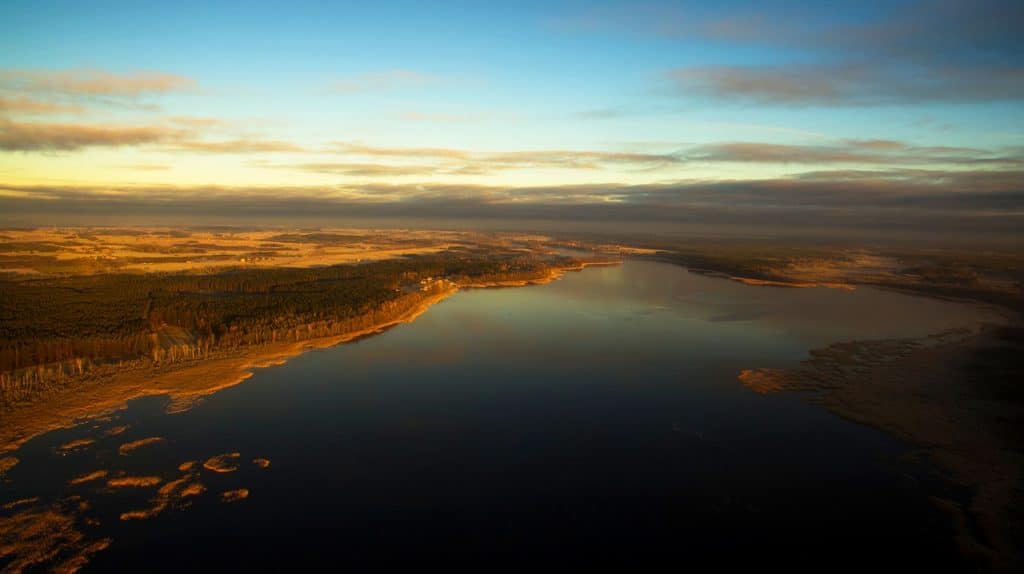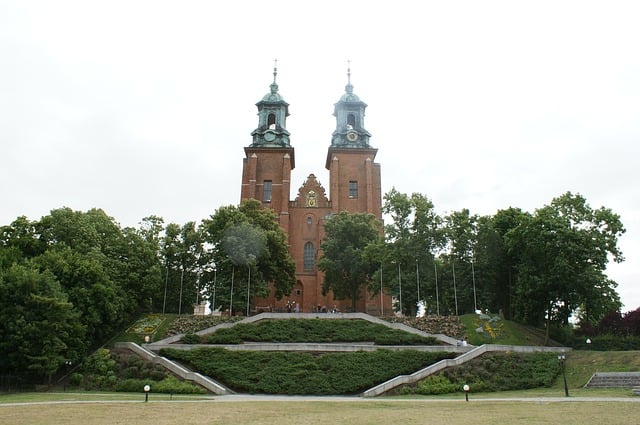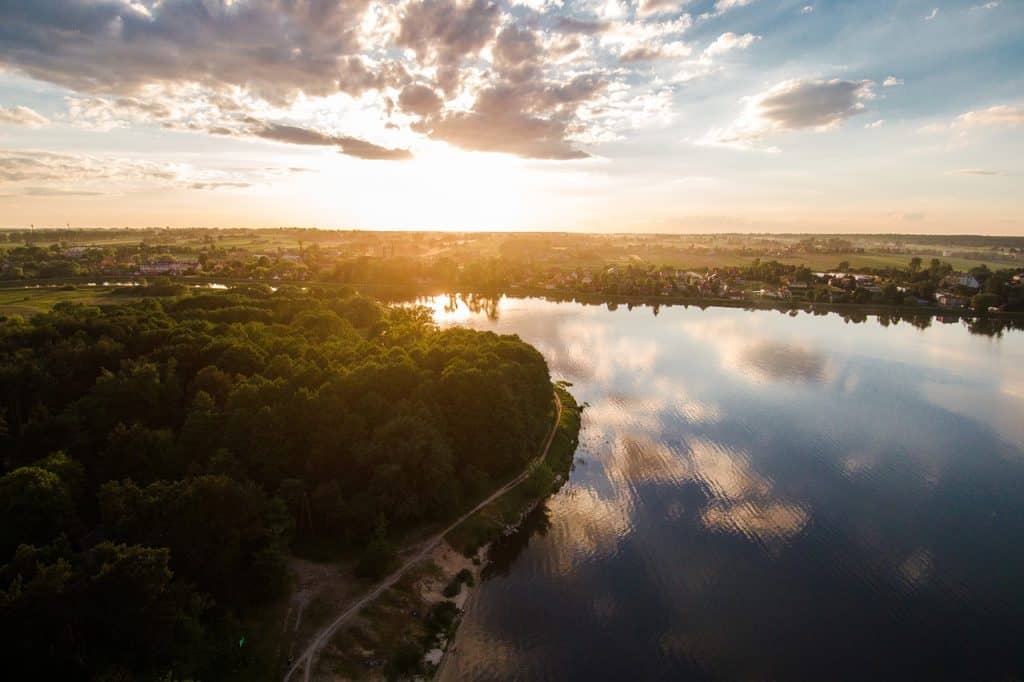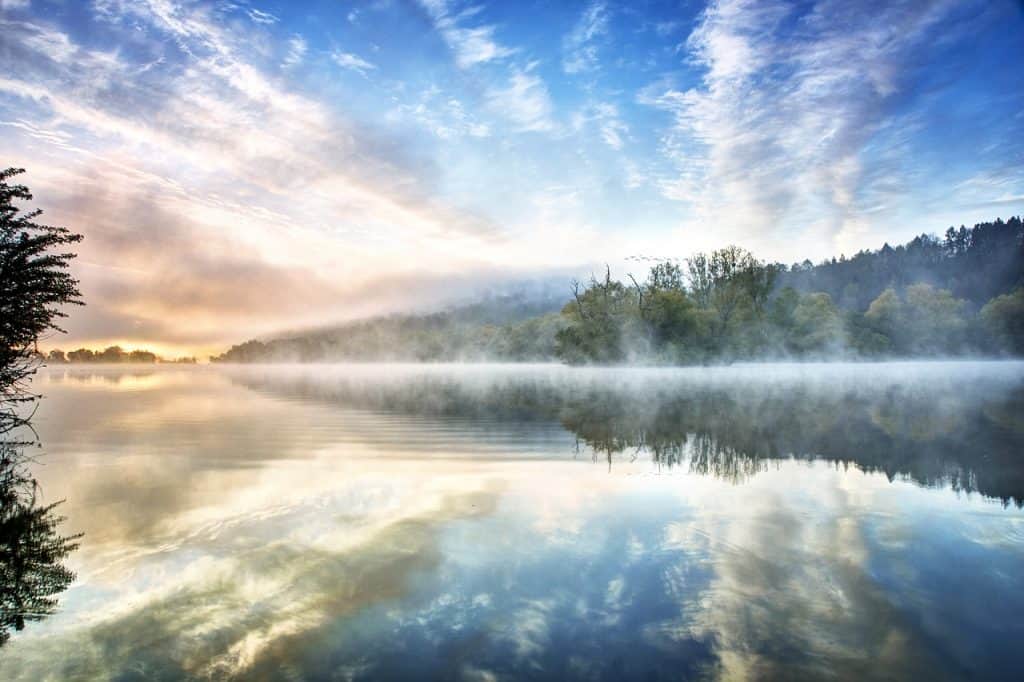The Gniezno Lake District is located in the eastern part of the Greater Poland Lakeland. Approximately, it is occupied by the triangle marked by Poznań, Inowrocław and Konin. The described area is characterized by a young glacial relief: glacial gutters, terminal moraine, bottom moraine, sander plain. There is a complex of mainly ribbon lakes. A third-order watershed, separating the catchment of the Noteć and the Warta, runs through the area. The following rivers have their sources here: Wełna, Noteć Zach., And Meszna. The area is of great importance on the scale of Wielkopolska for the preservation of meadow communities formed on the layers of meadow lime, peat bogs and forest communities, especially riparian forests. Mixed stands predominate in forests. The best-preserved forest complexes include the forests in the vicinity of Miradz and Skorzęcin with well-preserved phytocoenoses of luminous oakwood, Central European hail and acid oak forests. At the bottom of the gutters, along the lakes and in the drainless hollows, there are fragments of alder-ash riparian forests and alders. In the overgrowing basins of the Black Lake and Salomon Lake, vegetation communities of low and transitional bogs have developed.

Lakes in the Gniezno Lake District:
- Lake Biezdruchowo
- Lake Biskupińskie
- Lake Budzisławskie
- Budziszewskie Lake
- Lake Chomiąskie
- Gopło Lake
- Lake Lednica
- Lake Mikorzyńskie
- Niedzięgiel Lake
- Oćwieckie Lake
- Ostrowskie Lake
- Ostrówieckie Lake
- Pątnowskie Lake
- Powidzkie Lake
- Lake Ślesińskie
- Lake Wilczyńskie
- Lake Żnińskie
Chances and dangers
The Gniezno Lake District has been drained for over a hundred years and the water is drained from it. From the mid-nineteenth century, when the Ostrowo-Gopło canal was built, water flows out of this area. In the mid-twentieth century, very large open-cast mines began to appear, contributing to the lowering of the groundwater level. However, the mine authorities are now aware of the problem and are taking pro-ecological activities. In particular, a great opportunity should be seen in the rehabilitation of workings where mining has already ended. The best prospect seems to be flooding such an area with water and creating another lake.
The most interesting tourist attractions in the Gniezno Lake District
Gniezno
The first capital of Poland. It is true that there is not much left of the Piast times, but the city has many monuments from later times. Most of them are in excellent condition. It is worth visiting the old town, the Primate’s Basilica or the Lech Hill.

Gopło Lake
Gopło Lake is one of the most famous lakes from the entire Pomeranian Lake District. It is located in the Gniezno Lake District, the town of Kruszwica lies directly on its shore. The name of the lake comes from the Goplan tribe, who once lived on its shores, and from the name of the water nymph from the famous Polish legend about Goplana and Popiel. The lake has an interesting structure – in places there are swamps here, as well as islets on the lake. It is also great for water sports.
Pałuki – Biskupin
One of the lands that hardly anyone knows about – although many people visit it – is Pałuki. It is an extremely historic area, therefore it is perfect for people who are looking for interesting monuments during their holidays. It is in the area of Pałuki that there is a settlement in Biskupin, which resembles the first medieval buildings of this type. However, Pałuki is not only Biskupin – it is also a series of churches and castles that were built centuries ago in this region, or tourist routes ideal not only for hiking, but also for cycling. Water sports enthusiasts will find places for canoeing trips here.
Kruszwica
The area of Kruszwica was an important point since the beginning of the 11th century, when there was a bishopric here. Over time, the village grew larger and grew to the rank of a city – it was located in the middle of trade and economic routes, and was also the main center of the Goplan tribe. Thanks to this, you can see monuments of world importance throughout Kruszwica, for example the Mouse Tower from the 14th century or the Church of Saint Teresa, built at the beginning of the 20th century.


